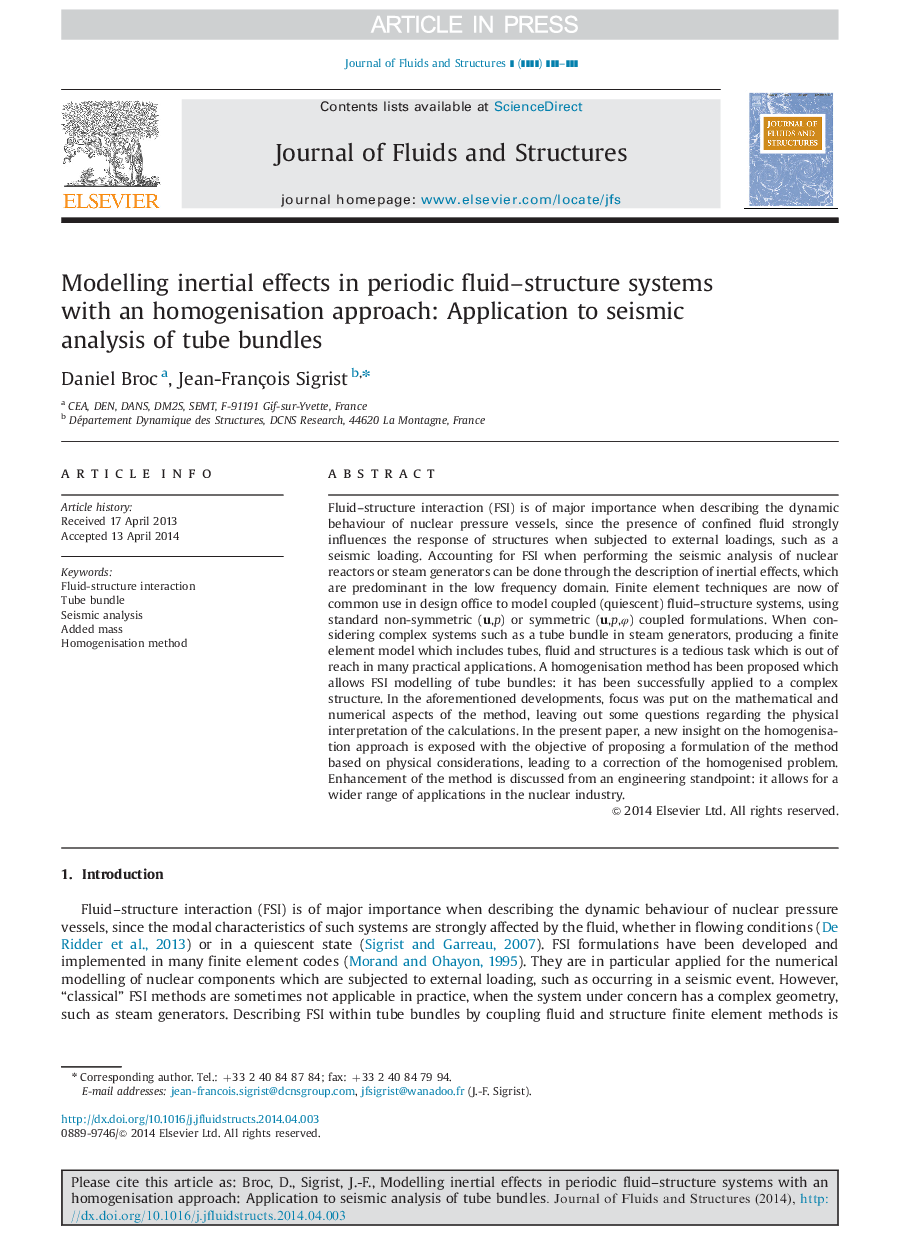| Article ID | Journal | Published Year | Pages | File Type |
|---|---|---|---|---|
| 7176097 | Journal of Fluids and Structures | 2014 | 18 Pages |
Abstract
Fluid-structure interaction (FSI) is of major importance when describing the dynamic behaviour of nuclear pressure vessels, since the presence of confined fluid strongly influences the response of structures when subjected to external loadings, such as a seismic loading. Accounting for FSI when performing the seismic analysis of nuclear reactors or steam generators can be done through the description of inertial effects, which are predominant in the low frequency domain. Finite element techniques are now of common use in design office to model coupled (quiescent) fluid-structure systems, using standard non-symmetric (u,p) or symmetric (u,p,Ï) coupled formulations. When considering complex systems such as a tube bundle in steam generators, producing a finite element model which includes tubes, fluid and structures is a tedious task which is out of reach in many practical applications. A homogenisation method has been proposed which allows FSI modelling of tube bundles: it has been successfully applied to a complex structure. In the aforementioned developments, focus was put on the mathematical and numerical aspects of the method, leaving out some questions regarding the physical interpretation of the calculations. In the present paper, a new insight on the homogenisation approach is exposed with the objective of proposing a formulation of the method based on physical considerations, leading to a correction of the homogenised problem. Enhancement of the method is discussed from an engineering standpoint: it allows for a wider range of applications in the nuclear industry.
Related Topics
Physical Sciences and Engineering
Engineering
Mechanical Engineering
Authors
Daniel Broc, Jean-François Sigrist,
